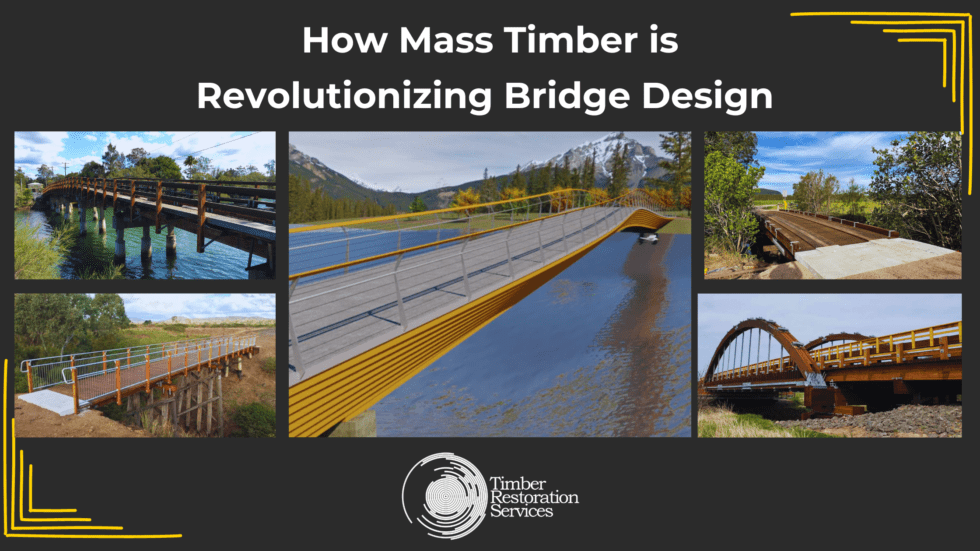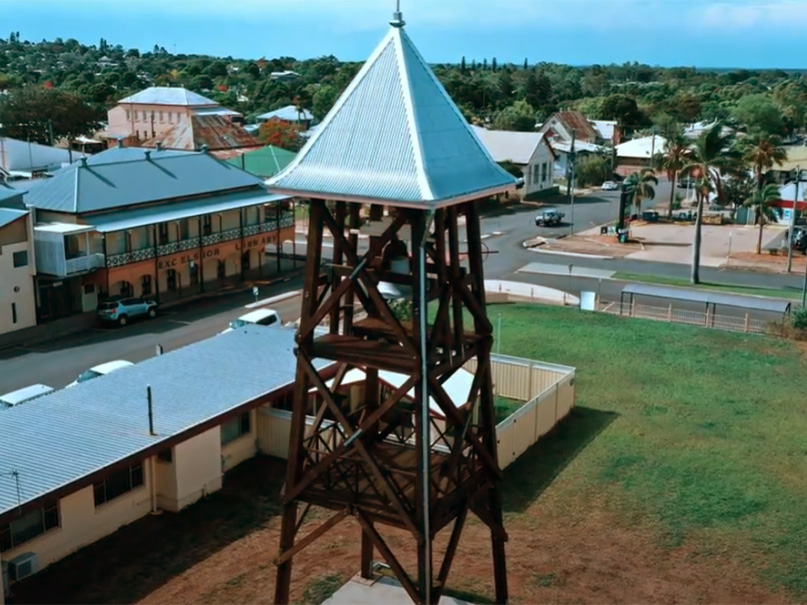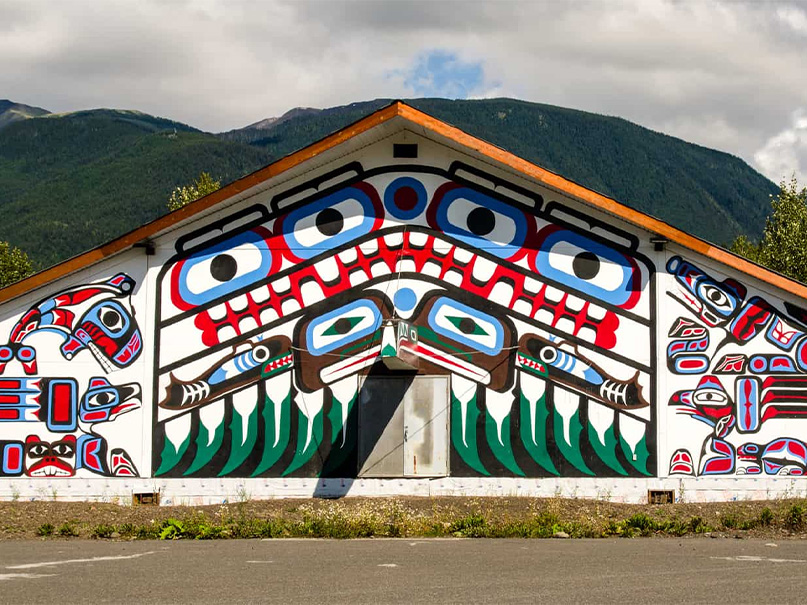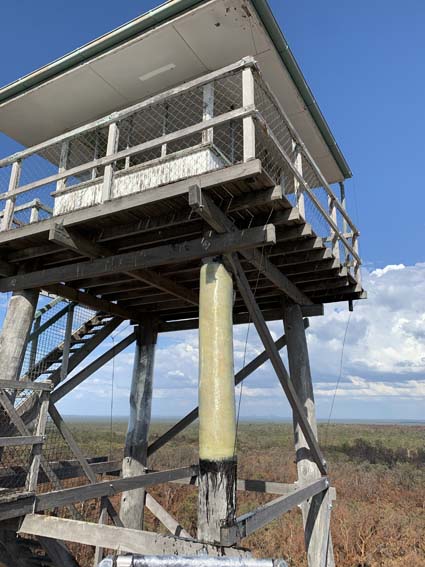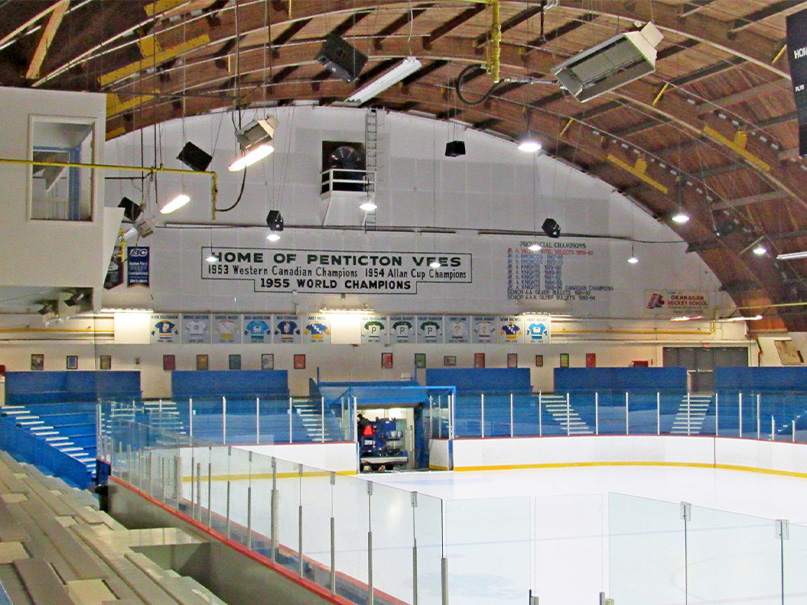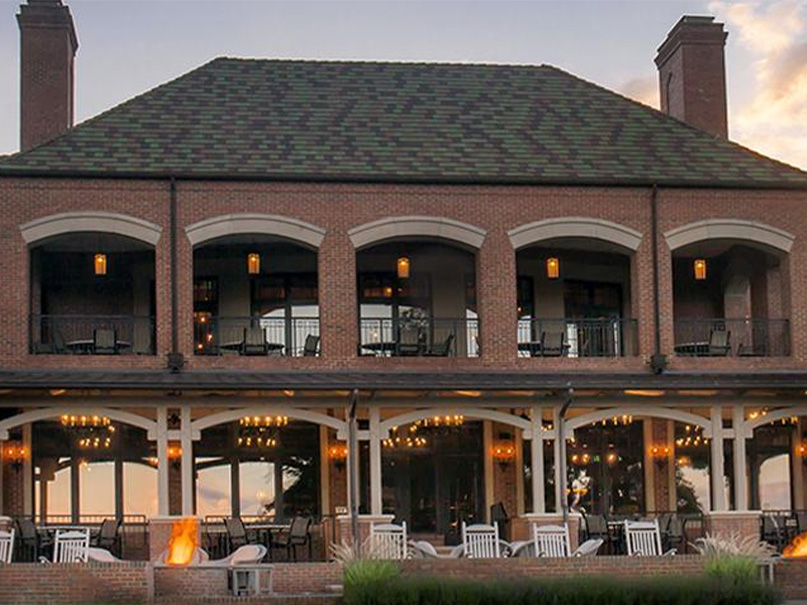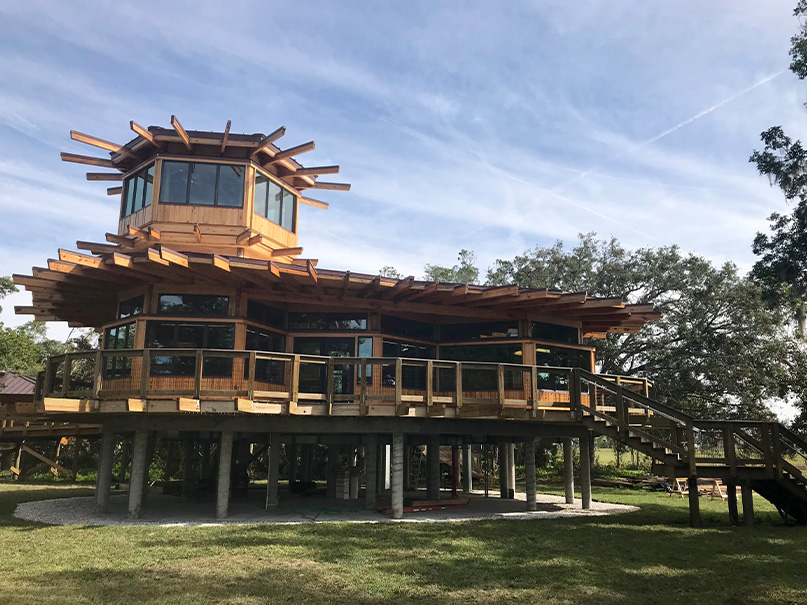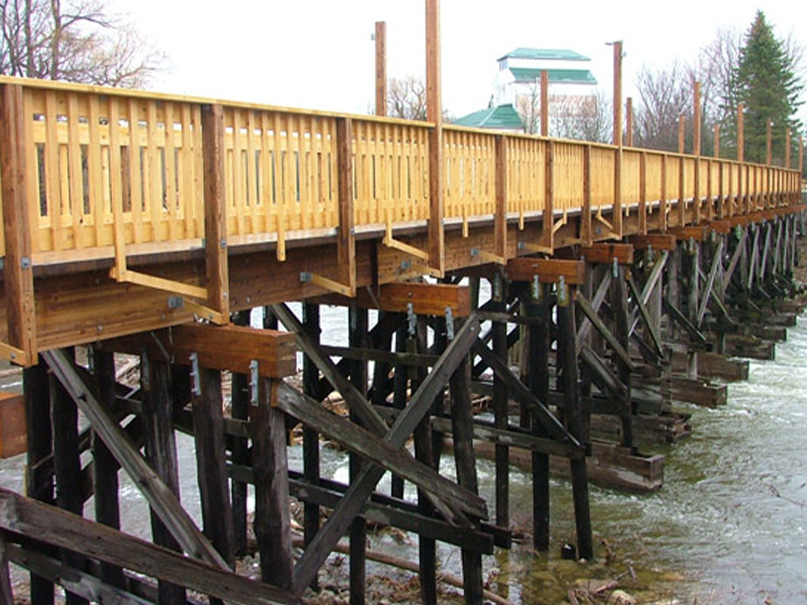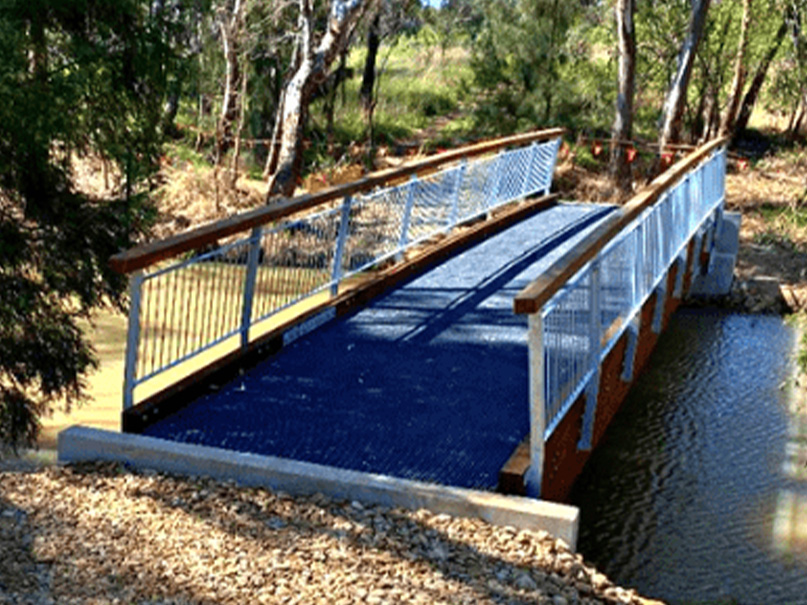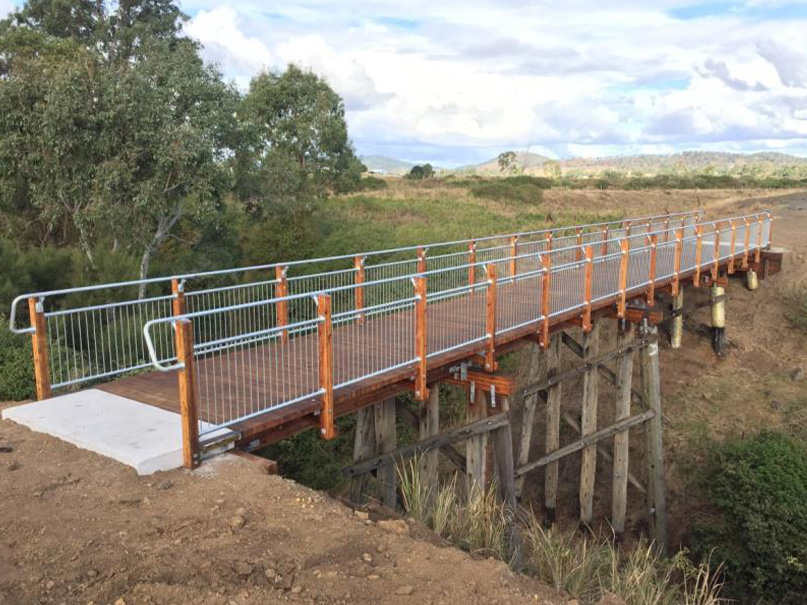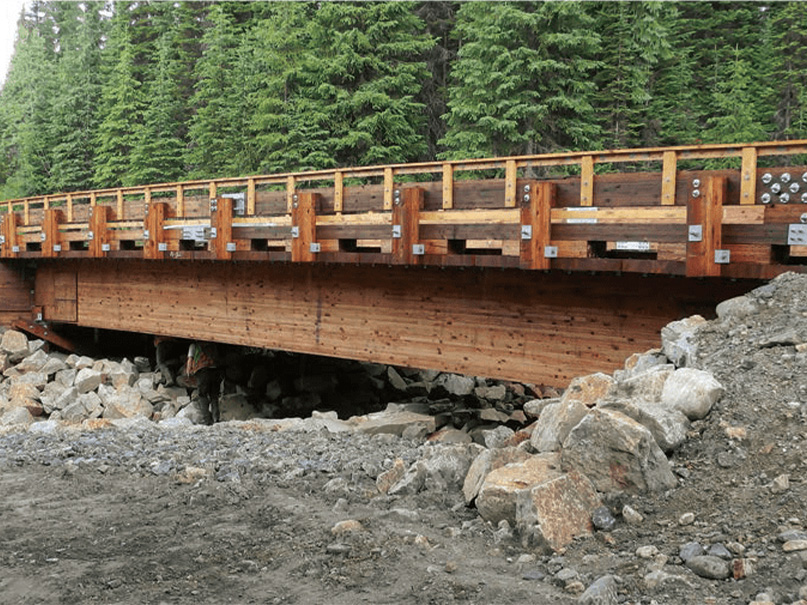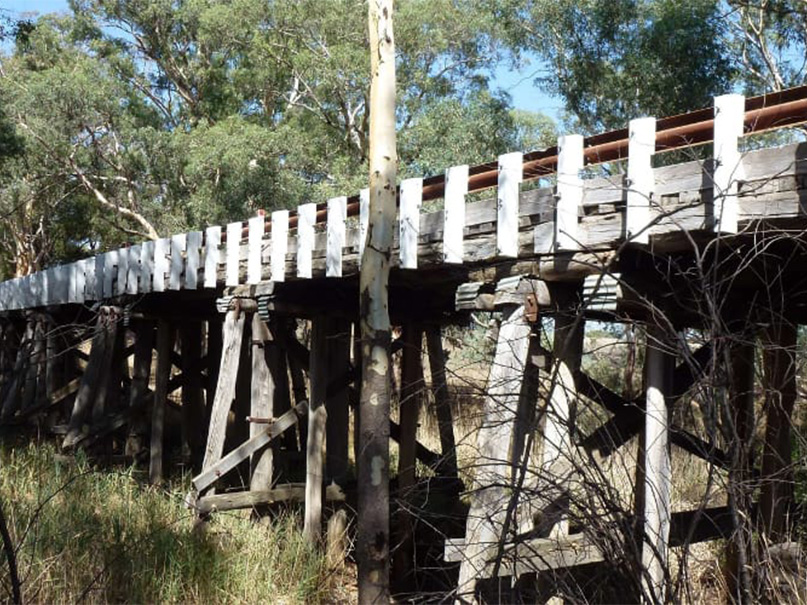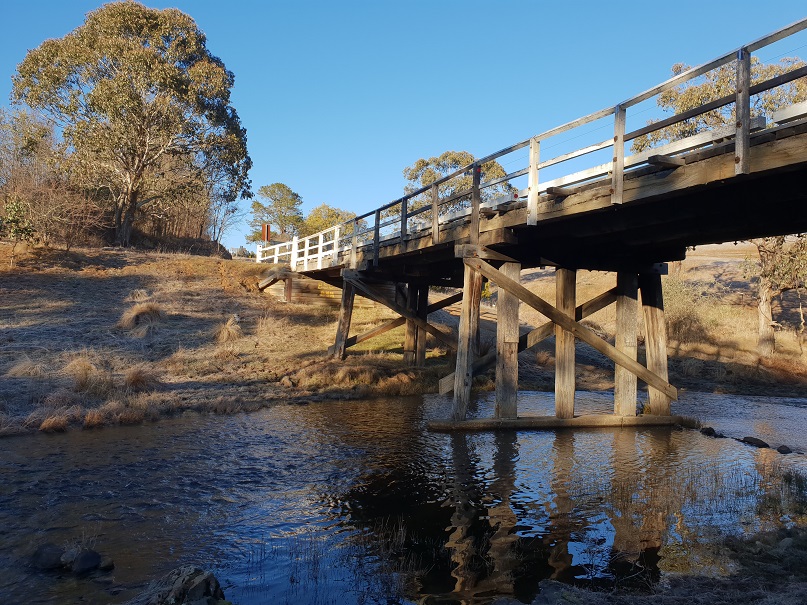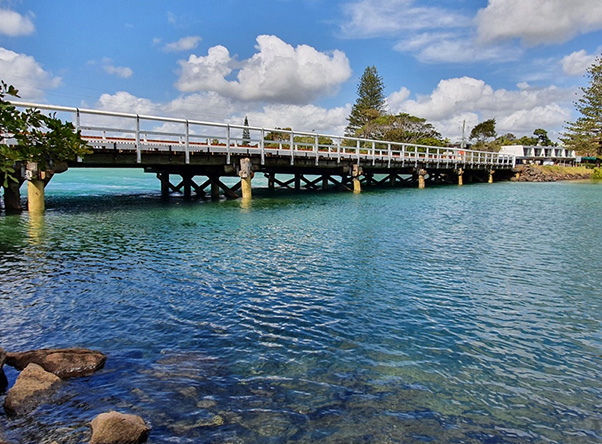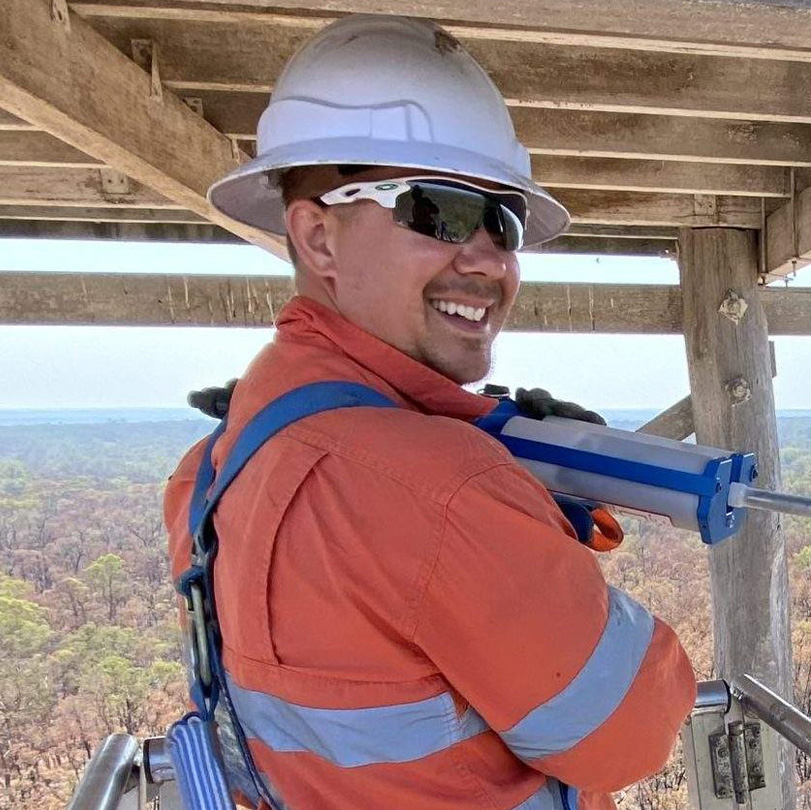Timber has been a construction material of choice for centuries, thanks to its abundance, natural beauty, and versatility. However, in recent years, Mass Timber (MT) has gained popularity as a preferred option for structural engineering projects, including bridges. Mass timber bridges offer a distinctive combination of strength, durability, and sustainability, making them a cost-effective and eco-friendly alternative to traditional steel and concrete bridges. In this article, we explore the world of mass timber and its transformative impact on the design and planning of infrastructure projects.
Mass Timber Bridging the Gap in Transportation Bridges
Communities worldwide are embracing mass timber bridges as a sustainable and customizable solution for transportation and vehicular bridge projects. From Nova Scotia’s Roger Bacon to Germany’s Stuttgarter Holzbrücke, this eco-friendly solution is being utilized to meet evolving community needs while simultaneously reducing carbon footprints. With its lightweight properties and ecological benefits, mass timber proves to be an ideal choice for long-term applications that demand strength and aesthetic appeal.
Beyond its practical advantages, mass timber presents ecological benefits compared to traditional materials. Being a renewable resource, it can be responsibly harvested from managed forests, thus reducing greenhouse gas emissions associated with production processes. Additionally, mass timber bridges enhance the natural surroundings with their organic aesthetics. Furthermore, these bridges often incorporate features like green roofs or solar panels, further bolstering their environmental impact by reducing energy consumption and providing additional habitat for wildlife species.
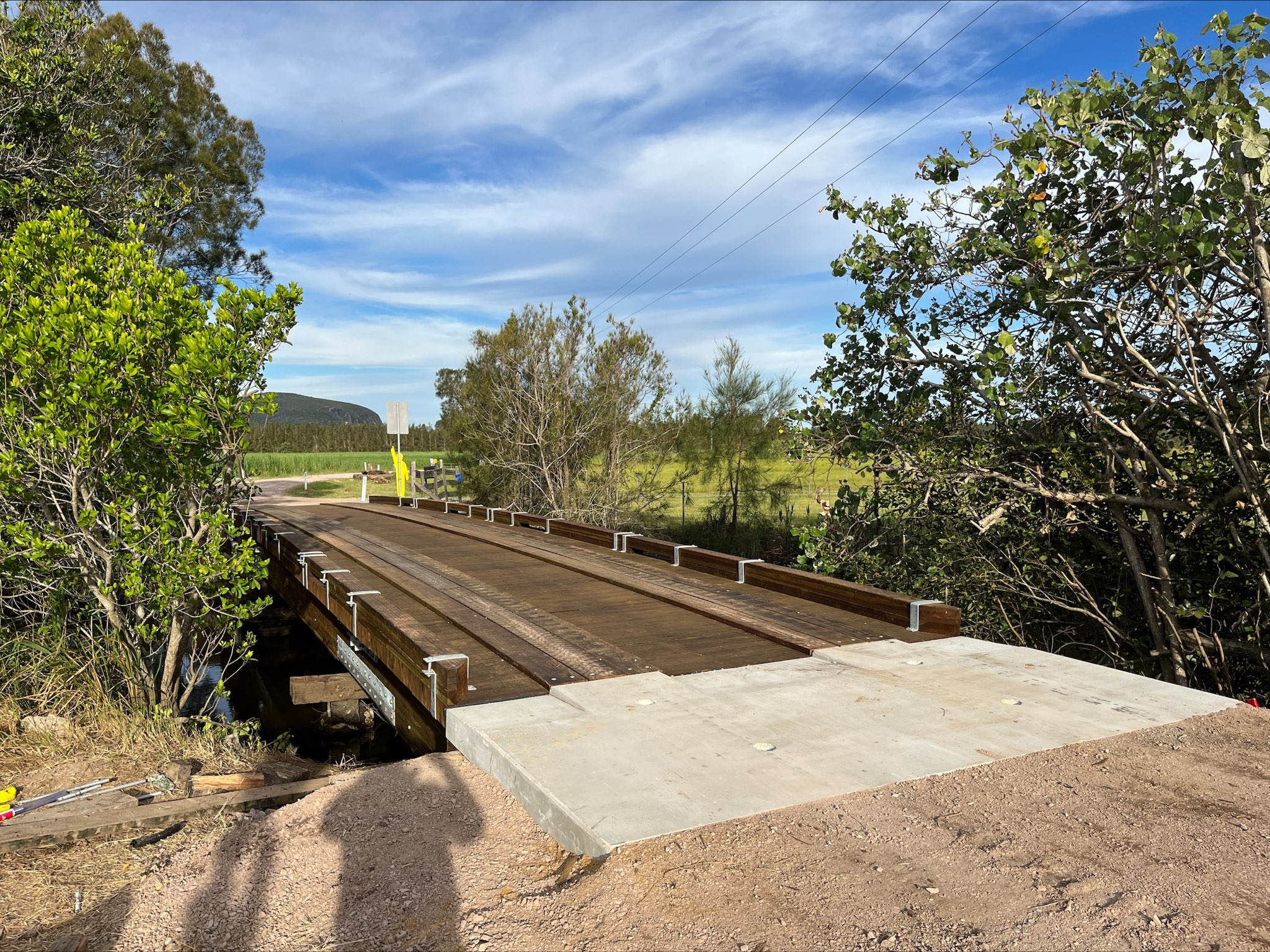
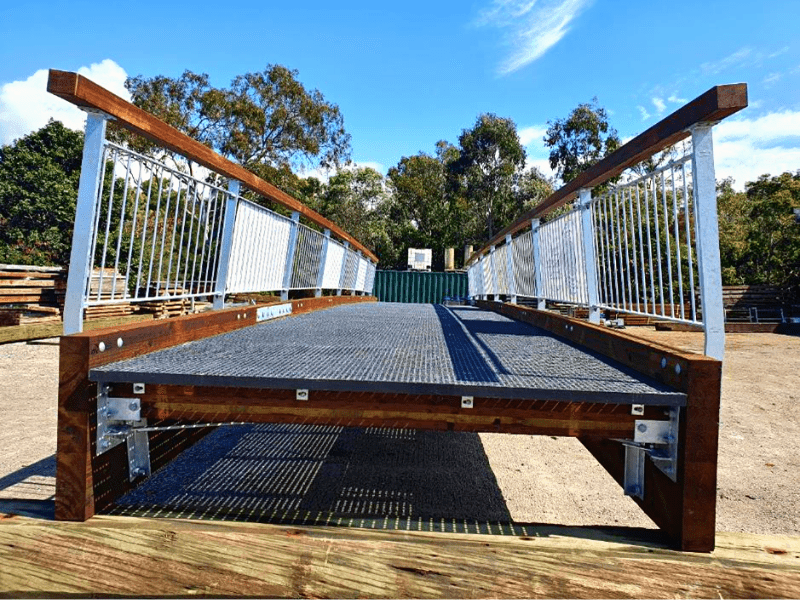
The Rising Demand for Pedestrian Bridges
Pedestrian bridges play a vital role in city infrastructure, offering safe and efficient transportation for pedestrians and cyclists. In recent years, there has been a surge in the development of pedestrian bridges and the implementation of “Rails to Trails” programs not only in the USA but also in other countries. Urban planning now considers pedestrian bridges as an indispensable element, providing a secure and effective means for pedestrians to navigate and simultaneously alleviating traffic congestion.
The “Rails to Trails” program takes unused railways and transforms them into paths for cycling and pedestrians. These initiatives encourage sustainable commuting, motivating individuals to choose bicycles or walking over cars, thereby reducing air pollution and positively impacting the environment. Moreover, these programs breathe new life into previously abandoned routes, allowing residents to explore their cities in a unique and engaging way.
Pedestrian bridges and “Rails to Trails” programs also foster tourism and community engagement. Pedestrian bridges themselves become tourist attractions, offering distinctive experiences for visitors. Furthermore, these developments bring communities closer together by creating public spaces where people can interact and connect with one another.
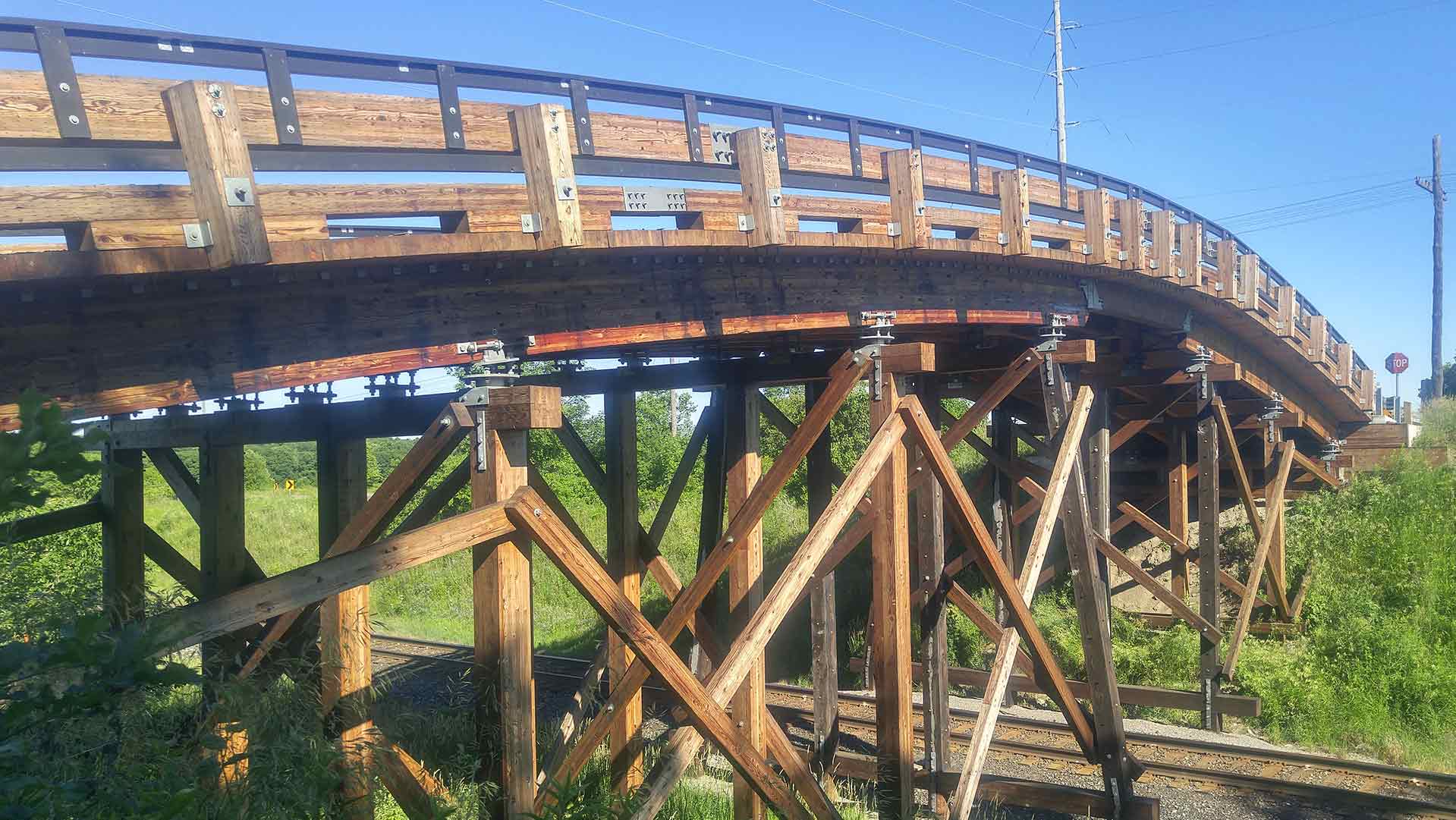
Service Life of Mass Timber
Mass timber revolutionizes structural engineering with multiple advantages over steel and concrete. It’s an eco-friendly alternative, reducing carbon footprint. Engineered mass timber ensures precise specifications for superior design and construction. Lightweight components enable easy transportation and on-site assembly. Timber’s natural insulation reduces energy consumption.
Modern mass timber bridges excel in strength and durability. They defy traditional notions of timber’s limitations, with products engineered to withstand demanding applications. Cross-laminated timber (CLT) and glue-laminated timber (Glulam) provide strong, stable panels and beams for load-bearing purposes, rivaling steel and concrete. These advancements address timber’s historical challenges, enhancing durability, decay resistance, fire resistance, and seismic performance while reducing foundation requirements.
Advances in timber structural engineering and the rise of mass timber are addressing historical challenges that timber faced by creating bridges that are more durable, resistant to decay and insect infestation, and better able to withstand fire as well as seismic activity performance and reduced foundation requirements.
The service life of mass timber bridges varies based on construction and maintenance. While concrete and steel bridges typically last 75+ years, well-designed and maintained timber bridges can exceed this. Research proves timber’s durability as primary structural members in highway bridges. With proper care, timber products offer a long and useful service life.
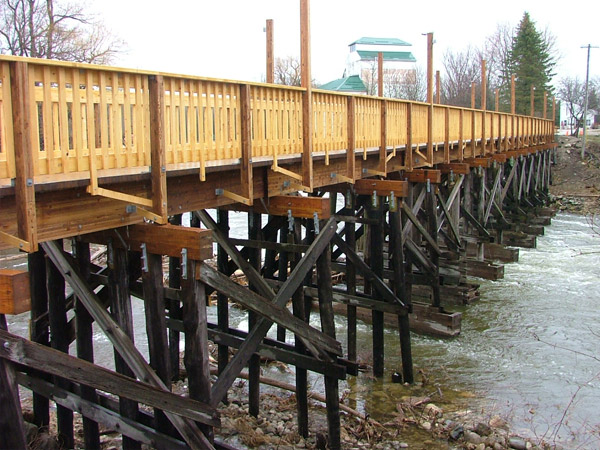
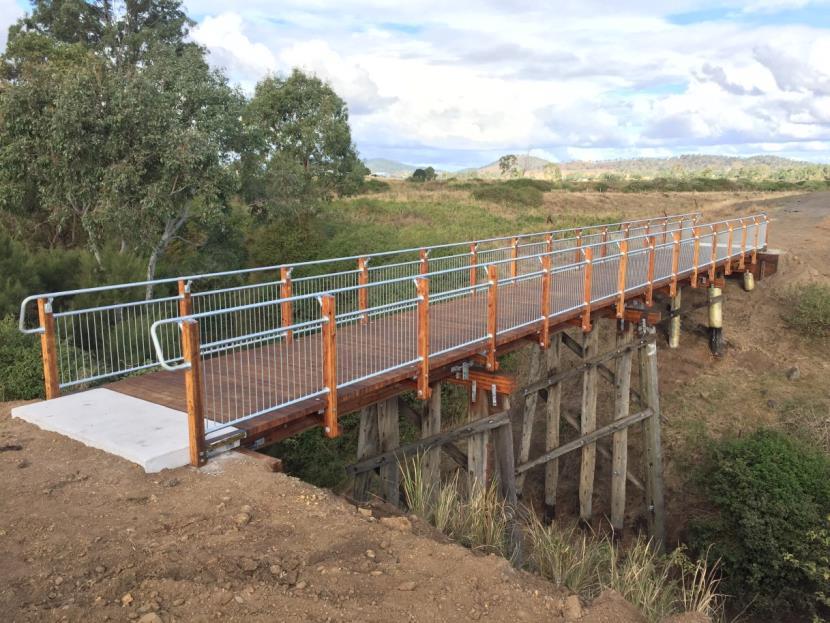
Mass Timber Modernizing Bridge Design
Engineers are evolving timber bridge design by incorporating mass timber, enabling them to create innovative designs that push the boundaries of what is possible. Mass timber engineers are revolutionizing pedestrian bridge structural engineering through the implementation of innovative design techniques. For instance, they now design some mass timber bridges to minimize exposed timber, reducing the risks of weathering and decay. Furthermore, mass timber bridges have significantly lower environmental impacts compared to other materials, requiring less energy for production and can be sourced from sustainably managed forests. Additionally, these bridges boast aesthetic appeal and can be skillfully designed to harmonize with their surroundings. This makes mass timber an attractive option for bridge designers seeking to construct innovative, cost-effective, and aesthetically pleasing structures. Mass timber bridges have been successfully constructed across the globe, from Australia and Canada to Europe.
Oceania
In Australia, Timber Restoration Services builds numerous pedestrian bridges and vehicular bridges across the continent. These structures currently include Jimmy’s Gully Pedestrian Bridge (28 m), Flowerdale Lagoon Pedestrian Bridge (15 m), River Road Vehicular Bridge (20 m), and Newry Island Vehicular Bridge (62 m). These bridges vary in length, span, and composition, but what they all have in common is the incorporation of mass timber in their designs. Specifically, glulam made of Douglas Coastal Fir is utilized. This material enables TRS to deliver longer service lives, lighter dead-weight loads, and innovative design properties that cater to the required distances.
Europe
In Europe, they are using mass timber bridges to push boundaries even further. In Germany, they recently constructed a glulam bridge across the Rhine River, spanning nearly 200 meters in length and supporting both pedestrians and cyclists. This bridge stands as one of the longest glulam bridges ever built, showcasing the remarkable progress of mass timber technology in recent years.
North America
In 2019, Timber Restoration Services constructs the Roger Bacon Bridge (65 m) in Nova Scotia, Canada, just outside Amherst. It stands as the longest clear span, three-lane design timber bridge in Canada, with a clear span section of 40 meters. The bridge utilizes pressure-treated glue laminated timber (glulam) arch construction, which weighs significantly less and exhibits greater resistance to local environmental conditions than competing structural materials. The bridge replacement project costs $3 million, estimated to have a service life of 75-100 years. This cost is 33% lower than steel options submitted to the Nova Scotian government.
The industry revolutionizes with the use of mass timber in bridge design, offering engineers more options to create unique and cost-effective structures that are aesthetically pleasing. As more bridges embrace this innovative material, we can anticipate witnessing an array of groundbreaking designs from around the world in the future.
Conclusion
In summary, mass timber is revolutionizing the bridge design industry by providing engineers with more options to create unique structures that are both aesthetically pleasing and cost-effective. Engineers and construction firms using mass timber employ engineered timber products, innovative design techniques, and advanced inspection and maintenance strategies to create stronger, more durable, and more aesthetically pleasing bridges. Mass timber bridges also contribute positively to the environment as they require less energy to produce compared to traditional materials and can be sourced from sustainably managed forests. Additionally, mass timber bridges create opportunities for tourism and community engagement by offering inviting public spaces that encourage interaction among people. As we continue to build more bridges worldwide using this material, we can anticipate witnessing increased positive impacts in terms of economics, design, and community engagement. Mass timber technology ensures a brighter future for bridge design!

